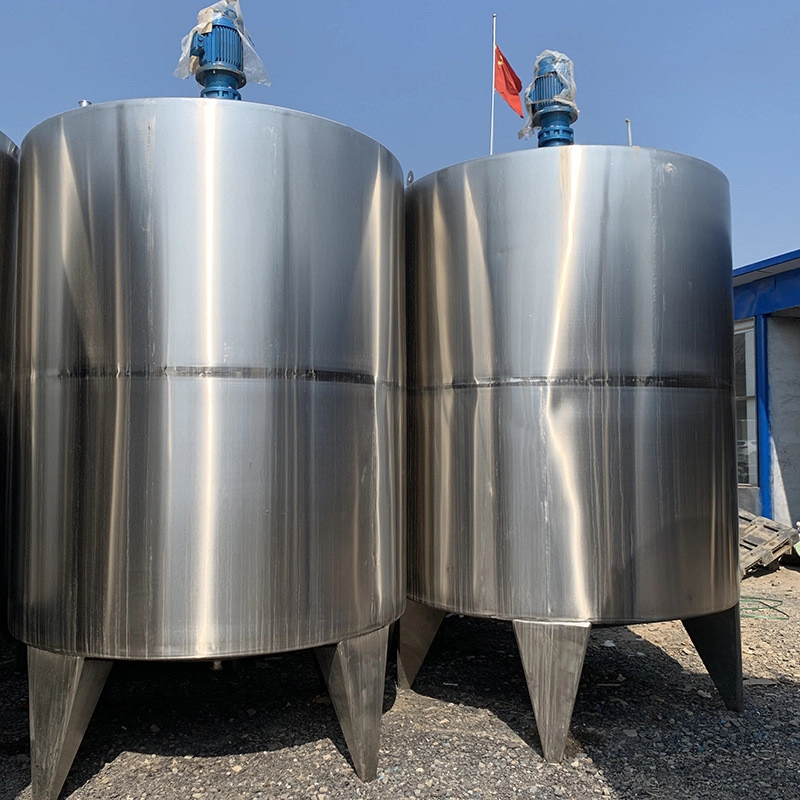The Hidden Challenges in Tank Selection
Selecting the right stainless steel storage tank manufacturer feels like navigating a minefield. Corrosion failures in chemical applications cost plants $2.5 billion annually (NACE International). Why? Many buyers focus solely on price tags while overlooking these critical factors:
- Material misunderstandings: Assuming all “316L” steel performs equally
- Welding blind spots: Inadequate procedures causing pitting or cracks
- Certification gaps: Missing critical industry-specific compliance
Interestingly, 68% of premature tank failures trace back to these three issues. The solution? Partnering with truly qualified manufacturers.
Secret #1: Not All Steel is Created Equal
Premium manufacturers like Weiting go beyond basic grades. While standard 304/316L works for food storage (Ra≤0.6μm polish), chemical or extreme applications demand specialized alloys.
Real-world example: Korean engineers recently developed 316HN stainless steel specifically to prevent hydrogen embrittlement in liquid hydrogen tanks at -253°C. These passed rigorous KRISO certification where standard 316L failed :cite[9].
Material Selection Guide:
| Application | Recommended Steel | Why It Matters |
|---|---|---|
| Pharmaceuticals | 316L Electro-polished | Prevents bacterial growth |
| Phosphoric Acid (93%) | 316L + Post-weld Passivation | Resists pitting corrosion |
| Marine Liquid Hydrogen | 316HN Specialty Grade | Prevents hydrogen cracking |
Secret #2: Precision Fabrication Techniques
Top stainless steel storage tank manufacturers employ aerospace-level welding protocols. Consider the 750m³ phosphoric acid tank project:
- Pre-weld: EN 288-3 procedure qualification testing
- During: Shielded metal-arc welding with real-time monitoring
- Post-weld: Grinding to Ra≤0.45μm + electrochemical passivation :cite[3]
Our team’s 2025 failure analysis for a dairy client revealed that substandard welds reduced tank life by 60%. The fix? Insist on documented welding procedures.
Secret #3: Smart Customization Strategies
Leading stainless steel storage tank manufacturers balance customization with standardization. For a 2,000L mobile chemical tank, they might offer:
- Standardized base: ASME VIII-1 certified vessel body
- Custom components: Application-specific pumps, mixers, or sensors
- Modular accessories: Interchangeable lids/ports for future changes :cite[5]:cite[8]
This hybrid approach cuts costs by 15-30% versus full-custom builds. How’s that for efficiency?
Manufacturer Capability Checklist:
- ✅ Pressure vessel design certification (ASME/CE)
- ✅ Material traceability documentation
- ✅ In-house welding procedure qualifications
- ✅ Post-fabrication surface treatment options
Secret #4: Verification Over Promises
Premium manufacturers validate performance before delivery. Standard tests include:
- Hydrostatic leak testing at 1.5x working pressure
- Liquid penetrant examination on all welds
- Surface roughness verification with profilometers :cite[3]
Surprisingly, only 40% of suppliers conduct all three tests. Always request test reports!
Secret #5: Beyond the Tank – Integrated Support
The best stainless steel storage tank manufacturers act as partners. Guangdong-based Weiting provides:
- Site-specific CAD drawings for foundation prep
- Remote video factory acceptance tests
- Global field service technicians :cite[5]
This support prevents 90% of installation mishaps. Think long-term partnership, not transaction.
Success Stories: Where Secrets Create Value
Case 1: Hydrogen Fuel Innovation
Hylium Industries combined 316HN stainless steel with advanced welding to create KRISO-certified marine liquid hydrogen tanks. Their 400kg prototype enables zero-emission shipping :cite[9].
Case 2: Heavy-Duty Chemical Storage
A European chemical plant eliminated corrosion issues in their 93% phosphoric acid tanks by implementing strict post-weld passivation protocols. Result? 12+ years of trouble-free service :cite[3].
Common Pitfalls to Avoid
Warning: Never accept tanks without:
- ❌ Material certification (mill test reports)
- ❌ Welding procedure specifications
- ❌ Third-party inspection certificates
Overlooking these invites premature failure and safety risks.
Your Tank Procurement Checklist
Use this when evaluating stainless steel storage tank manufacturers:
- 🔍 Verify material grade with spectrometer testing
- 📋 Review welding procedure qualification records
- 📐 Confirm dimensional accuracy guarantees
- 📊 Request hydraulic test results
- 🌐 Ensure global service support availability
FAQs: Stainless Steel Tank Manufacturing
Q1: What stainless steel grade is best for food storage tanks?
316L with Ra≤0.4μm polish prevents bacterial adhesion and meets FDA requirements. Mirror finishes are critical for dairy/pharma applications.
Q2: Can I get custom-sized tanks for space-limited facilities?
Absolutely! Reputable manufacturers offer diameter-to-height adjustments. One client installed a 5,000L tank in a 2m ceiling space using squat-design engineering.
Q3: How do I verify welding quality remotely?
Request: 1) RT (radiographic testing) films of longitudinal/circumferential seams, 2) Penetrant testing reports with timestamped photos, 3) Weld mapping documentation.
Q4: What certifications matter most for chemical tanks?
Prioritize ASME VIII Division 1 for pressure vessels, EN 10204 3.1 material certs, and application-specific approvals (e.g., FDA, EHEDG for food).







